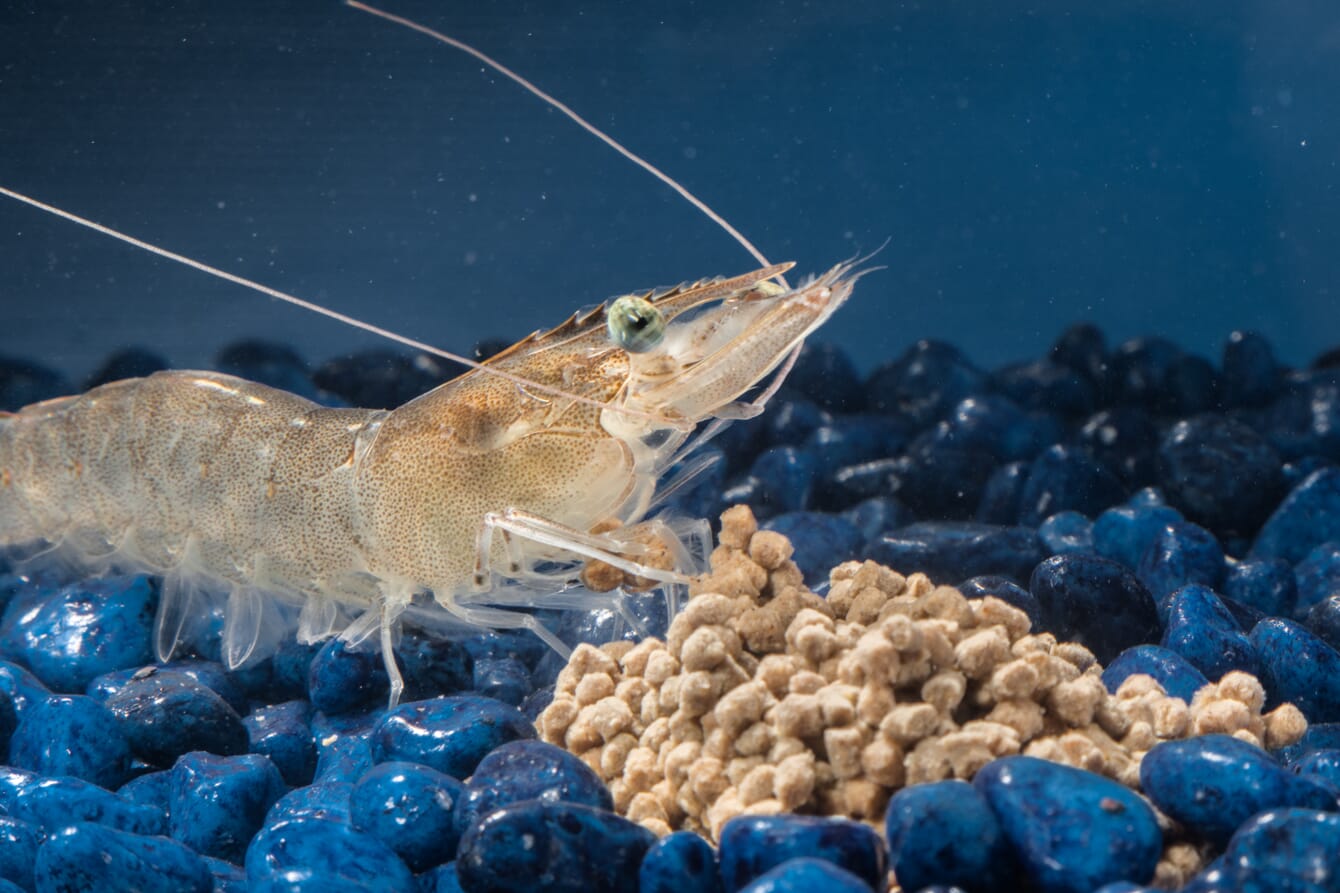
© Phibro
Minerals have many physiological functions and are essential in the maintenance of osmotic pressure and the regulation of pH, hemolymph and urine. They are also important components of exoskeleton, soft tissues, enzymes, vitamins, hormones, pigments, and essential for muscle contraction and transmission of nerve impulses (Piedad-Pascual 1989).
The ionic composition generally has a greater impact on shrimp health than salinity (Davis et al. 2004). Whereas sodium (Na) and potassium (K) are important for osmoregulation function, calcium (Ca) and magnesium (Mg) are very important for moulting and new shell formation (Samocha et al. 2017).
The culture of Pacific white shrimp (Penaeus vannamei) in low salinity inland waters faces several challenges. The ionic composition of these waters is generally deficient in several key minerals, including potassium (K+) and magnesium (Mg2+). The Mg:Ca concentration needs to be maintained at a 3:1 ratio for better survival, growth rate and production (Aruna 2017).
In general, levels of minerals in pond water of low salinity must be comparable to the ionic levels and ratios found in seawater. The addition of important minerals can be depleted by adsorption of the pond bottom, leaching, drainage of the pond water, or dilution by heavy rainfall. It is therefore important to frequently perform ionic profile analysis before stocking the ponds and throughout the culture period. The ionic composition and ratios of low salinity rearing water should be comparable to sea water for normal physiological functions in Penaeid shrimp (Suguna 2020).
What's the optimal ionic composition?
The ionic ratios of sodium to potassium (Na:K) and magnesium to calcium (Mg:Ca) play an important role in physiological functions (Suguna 2020). These ionic ratios appear to be more important than the overall water salinity. Improper ionic ratios of these minerals may lead to osmotic stress, which has a detrimental effect on growth and survival of the shrimp. The Na:K and Mg:Ca ratios should preferably be 28:1 and 3.4:1 respectively (as mass ratio expressed as g/L or mg/L). The ionic ratio of Ca:K, about 1:1 in seawater, should be maintained as well in water of low salinity (Suguna 2020). Similarly, Mg:Ca:K ratio should be near 3:1:1 (mass ratio) and Cl:Na:Mg ratio close to 14:8:1 (mass ratio).
When these ionic ratios are maintained, low-salinity water is suitable for the culture of Pacific white shrimp, as long as calcium levels are high (> 30 mg/L) and alkalinity is above 75 mg/L. Low salinity water can be supplemented with potassium and magnesium to allow inland cultivation of Pacific white shrimp, according to Samocha et al. (2017).
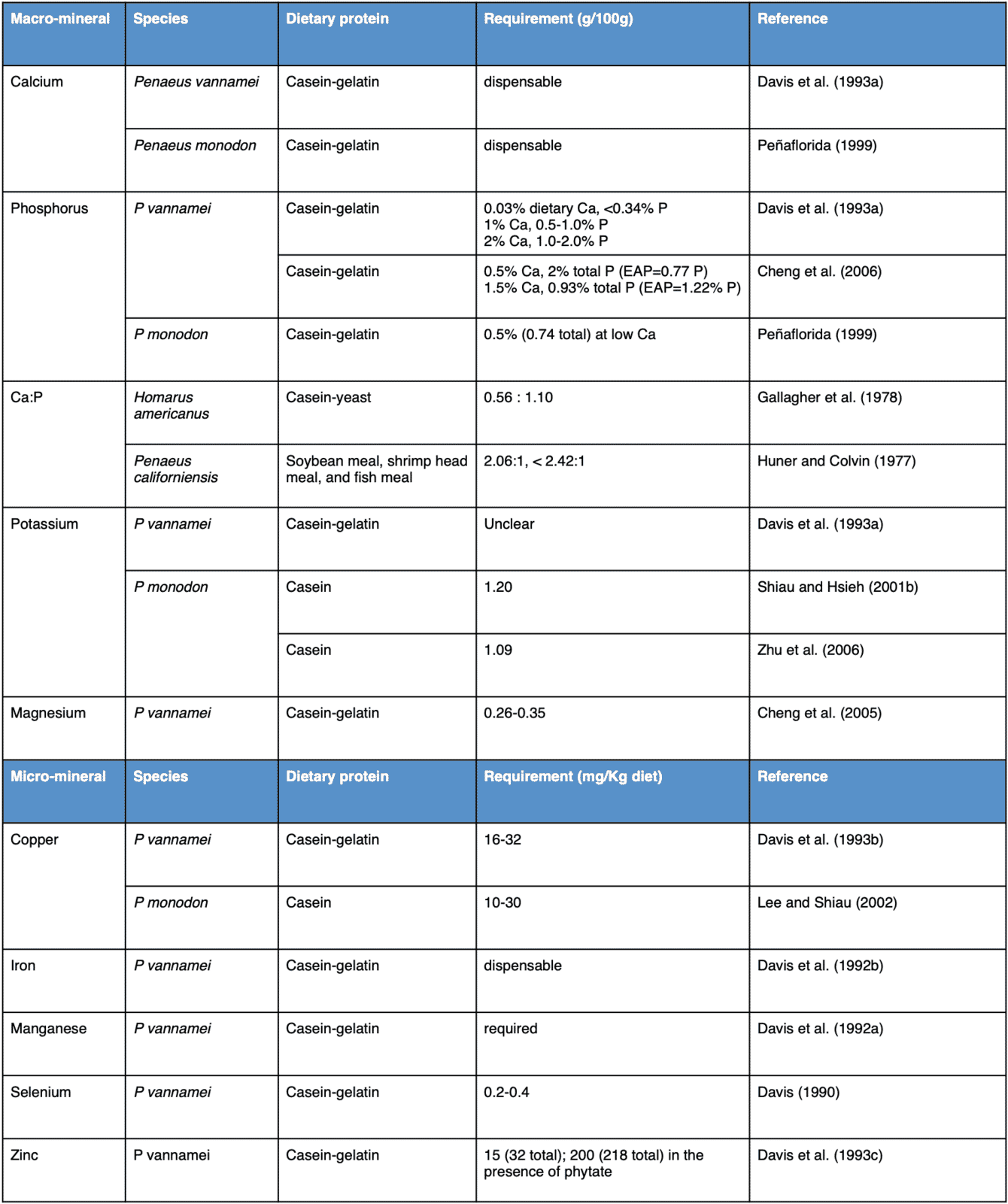
Mineral requirements of crustaceans adapted from Nutrient Requirements of Fish and Shrimp - NRC -The National Academies Press (2011), in Chapter 8 - Minerals.
In a recent study by Truong et al. (2020), the macro and trace minerals important in the diet of juvenile Penaeus monodon were determined. The investigators demonstrated that inclusions of calcium:phosphorus at 1:1 ratio, magnesium, boron, manganese, selenium, and zinc to the dietary formula were important for growth, feed conversion efficiency, biomass gain and nutrient utilisation. The mineral requirements and quantities for Penaeid shrimp reported by other investigators (see Table 2) were used in this trial by Truong et al. (2020).
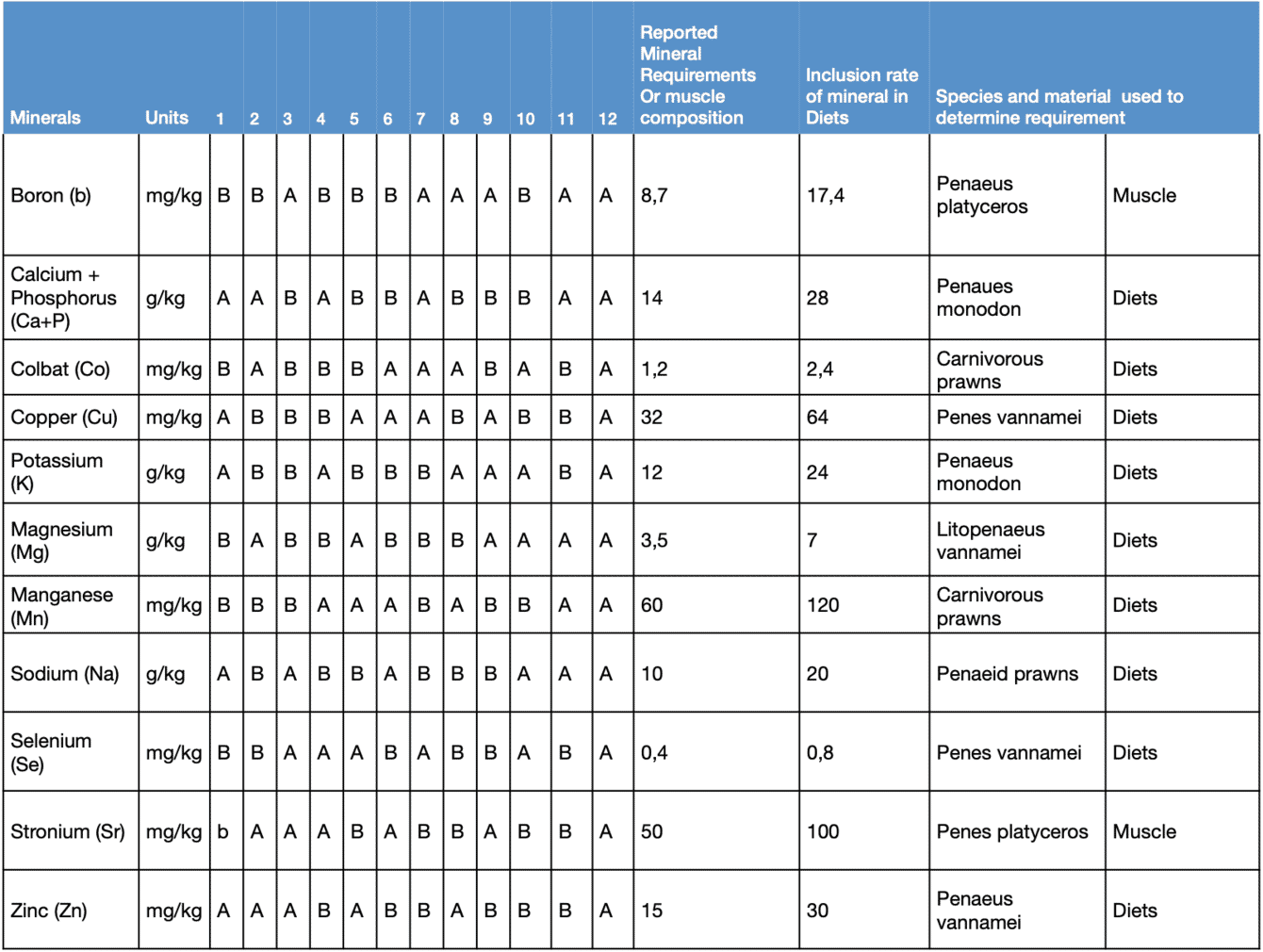
Mineral-supplement allocation for 12 treatments and reported mineral requirements or muscle composition derived from nine studies. ‘b’, ‘a’ denotes the inclusion rate of ‘below expected requirements’ and ‘above expected requirements in diets’, respectively. Inclusion rates of mineral in ‘a’ diets were twice the amount of the ‘reported mineral requirement or muscle composition’ level (Adapted from Truong et al. 2020).
Samocha et al. (2017) describe the ionic composition and ratios of seawater (34 ppt) as a reference to keep the same proportions of minerals in lower salinity waters (Table 3).
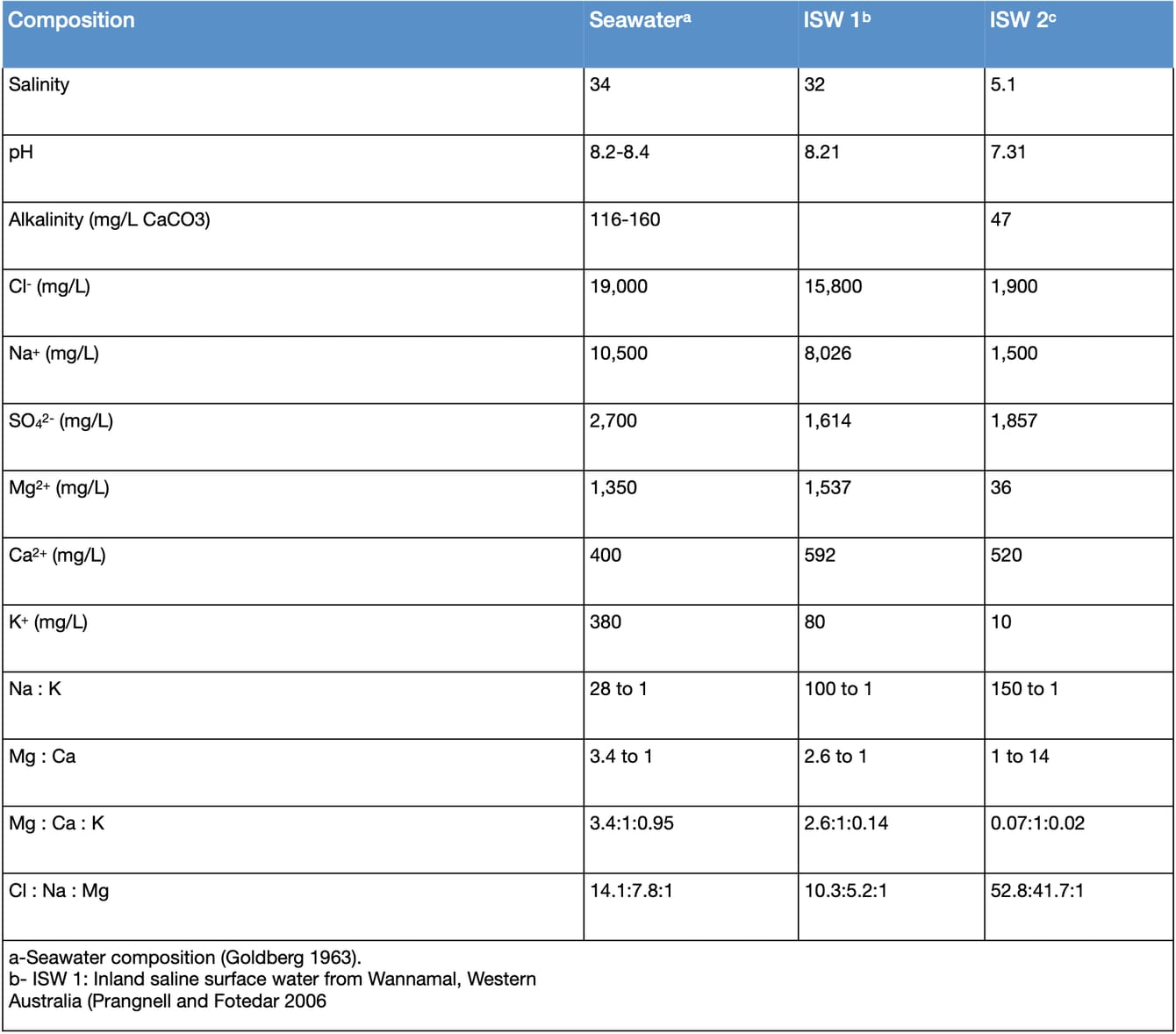
Ionic composition of seawater compared to two inland saline waters
It is understood that the proportions of important minerals in low salinity waters are very important, and there is a minimum requirement for the concentrations of some or all the important minerals. According to Boyd (2002), shrimp have difficulty moulting if total alkalinity is less than 50 mg/L (61 mg/L bicarbonate).
Boyd (2002) describes a table of factors to calculate the minimum concentrations of the important ions by multiplying the factor of the ion by the salinity (ppt) of the low salinity water to obtain the minimum concentrations of the important ions. The example in Table 4 is for a low salinity water of 5 ppt.
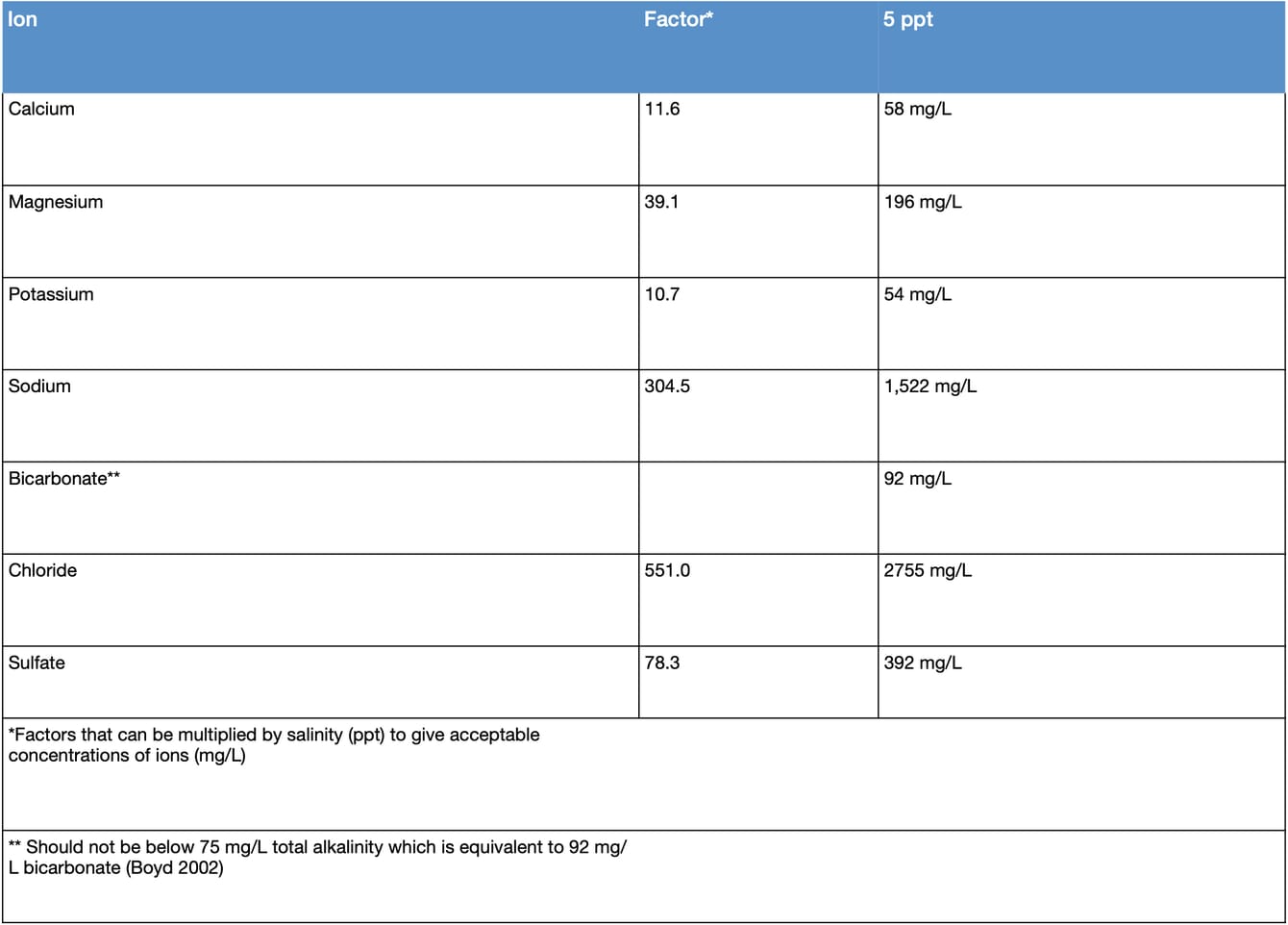
Factors for estimating acceptable concentrations of individual ions for inland shrimp culture in low salinity waters. For example: acceptable concentrations of ions for 5 ppt salinity provided (Boyd, 2002).
In the light of the points raised above, shrimp farmers - in particular those operating in low salinity systems - should ensure that they choose diets appropriate for their water conditions. This will improve shrimp health and growth rates and boost a farm's profitability accordingly.




